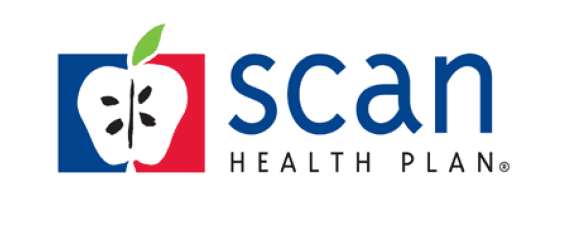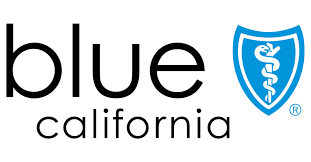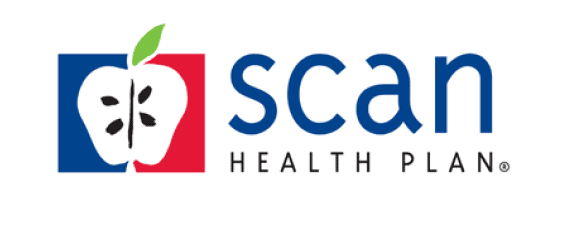Medicare
Insurance
Did you know 10,000 baby boomers are turning 65 every day? Are you feeling overwhelmed and frustrated with so many Medicare plans and insurance options? Our AHIP certified Medicare team can help you select the most suitable insurance option for you and your loved one?
What is Medicare?
Medicare is a federal government program that provides health insurance coverage for Americans aged 65 and older, people under 65 with specific disabilities and people at any age suffering from End-Stage Renal Disease (ESRD) (i.e. permanent kidney failure that requires a kidney transplant or dialysis). Medicare has the following 4 major catergories:
Part A (Hospital Insurance)
Part A covers inpatient hospital stays, care in a skilled nursing facility, hospice care, and some home health care. For Part A, you typically don’t pay a premium and you will be automatically signed up in most cases. However, Medicare does not cover everything and it does not cover the total cost for many of the medical supplies or covered services.
Part B (Medical Insurance)
Part B covers certain doctors’ services, outpatient care, medical supplies, and preventive services (i.e. x-rays, dianostic tests and renal dialysis) A premium has to be paid by most people to access Part B.
Part C (Medicare Advantage Plan)
Part C is a combination of Part A and Part B and must cover nothing less than all the services covered under Original Medicare Part A & Part B. The key difference here is that this type of coverage is provided by private insurance companies approved by Medicare.
Part D (Prescription Drug Coverage)
Part D provides drug coverage offered by private insurance companies approved by Medicare. You need to enroll in Part D when you initially become eligible. Otherwise, you will be subject to a late enrollment penalty.
What is Medicare?
Medicare is a federal government program that provides health insurance coverage for Americans aged 65 and older, people under 65 with specific disabilities and people at any age suffering from End-Stage Renal Disease (ESRD) (i.e. permanent kidney failure that requires a kidney transplant or dialysis). Medicare has the following 4 major catergories:
Part A (Hospital Insurance)
Part A covers inpatient hospital stays, care in a skilled nursing facility, hospice care, and some home health care. For Part A, you typically don’t pay a premium and you will be automatically signed up in most cases. However, Medicare does not cover everything and it does not cover the total cost for many of the medical supplies or covered services.
Part B (Medical Insurance)
Part B covers certain doctors’ services, outpatient care, medical supplies, and preventive services (i.e. x-rays, dianostic tests and renal dialysis) A premium has to be paid by most people to access Part B.
Part C (Medicare Advantage Plan)
Part C is a combination of Part A and Part B and must cover nothing less than all the services covered under Original Medicare Part A & Part B. The key difference here is that this type of coverage is provided by private insurance companies approved by Medicare.
Part D (Prescription Drug Coverage)
Part D provides drug coverage offered by private insurance companies approved by Medicare. You need to enroll in Part D when you initially become eligible. Otherwise, you will be subject to a late enrollment penalty.
Types of Medicare Insurance
Who is Eligible?
When is the Best Time to Buy?
Initial Enrollment Period
When you first become eligible for Medicare, you can sign up during your Initial Enrollment Period. This is the 7-month period that begins 3 months before the month you turn 65, includes the month you turn 65, and ends 3 months after the month you turn 65. If you sign up during the first 3 months of your Initial Enrollment Period, in most cases, your coverage starts the first day of your birthday month. However, if your birthday is on the first day of the month, your coverage will start the first day of the prior month. If you enroll the month you turn 65 or during the last 3 months of your Initial Enrollment Period, your start date for coverage will be delayed.
Open Enrollment Period (October 15 – December 7)
Anyone with Medicare can join, switch, or drop a Medigap, Medicare Advantage or drug plan. Your coverage will begin on January 1, as long as the plan gets your request by December 7.
General Enrollment Period (January 1 – March 31)
If you already have Part A coverage and you get Part B for the first time during the General Enrollment Period (January 1— March 31), you can also join a Medigap or Medicare Advantage Plan at that time. Your coverage may not start until July 1.
Types of Medicare Insurance
Medicare Supplement Pan (Medigap)
Medicare Parts A and B provide insurance coverage for health-related expenses, but they don’t cover all of the health care costs.
A Medicare Supplement plan, often called “Medigap”, is a private insurance policy that covers some of the health care costs that Medicare does not cover.
These costs can include out-of-pocket expenses such as copayments, coinsurance and deductibles. With health care and out-of-pocket costs for Medicare participants on the rise, a Medicare Supplement plan can give you “peace of mind”.
Who is eligible?
- You must be enrolled in Medicare Part A and B.
- You must be a resident of a state where the policy is offered.
- You must be 65 or older unless you have a qualifying disability or End-Stage Renal Disease (ESRD) or Lou Gehrig’s Disease.
Medicare Advantage
Plan (Part C)
Medicare Advantage plans are offered by private insurance companies that contract with Medicare. These plans provide Part A and Par B benefits and most plans also offer prescription drug coverage (Part D).
The following plans are offered:
- Health Maintenance Organization (HMO)
- Preferred Provider Organization (PPO)
- Private Fee-for-Service (PFFS)
- Special Needs Plans (SNPs)
- Medical Savings Account (MSA) Plans
Who is eligible?
- You must be enrolled in Medicare Part A and Part B.
- You must live in the service area of a Medicare Advantage insurance provider that is accepting new users during your application period.
- You must be a U.S. citizen, U.S. national or lawfully present in the U.S.
- You must not have ESRD.
Prescription Drug
Coverage (Part D)
Medicare Part D provides prescription drug coverage for Medicare enrollees.
You can obtain Part D coverage through a stand-alone drug plan (PDP) or Medicare Advantage plan (MA-PD) inclusive of Part D coverage within the plan.
There are no single monthly premiums and deductibles for Part D prescription drug coverage. Each drug plan sets its own premiums, deductibles, copays, and the range of drugs that it covers.
Who is eligible?
- You must be eligible for Medicare Part A and have Part B coverage.
- You need to apply during a Part D enrollment period (October 15 to December 7)
- If you already have a Medicare Advantage plan, you may not be eligible for a Part D plan, depending on the type of plan you are enrolled in.
When is the Best Time to Buy?
Initial Enrollment Period
When you first become eligible for Medicare, you can sign up during your Initial Enrollment Period. This is the 7-month period that begins 3 months before the month you turn 65. If you sign up during the first 3 months of your Initial Enrollment Period, in most cases, your coverage starts the first day of your birthday month. However, if your birthday is on the first day of the month, your coverage will start the first day of the prior month.
Open Enrollment Period (October 15 – December 7)
Anyone with Medicare can join, switch, or drop a Medigap, Medicare Advantage or drug plan. Your coverage will begin on January 1, as long as the plan gets your request by December 7.
General Enrollment Period (January 1 – March 31)
Medicare provides this period every year for those who missed signing up when they were first eligible. You may have to pay a late enrollment penalty and your coverage may not start until July 1.











